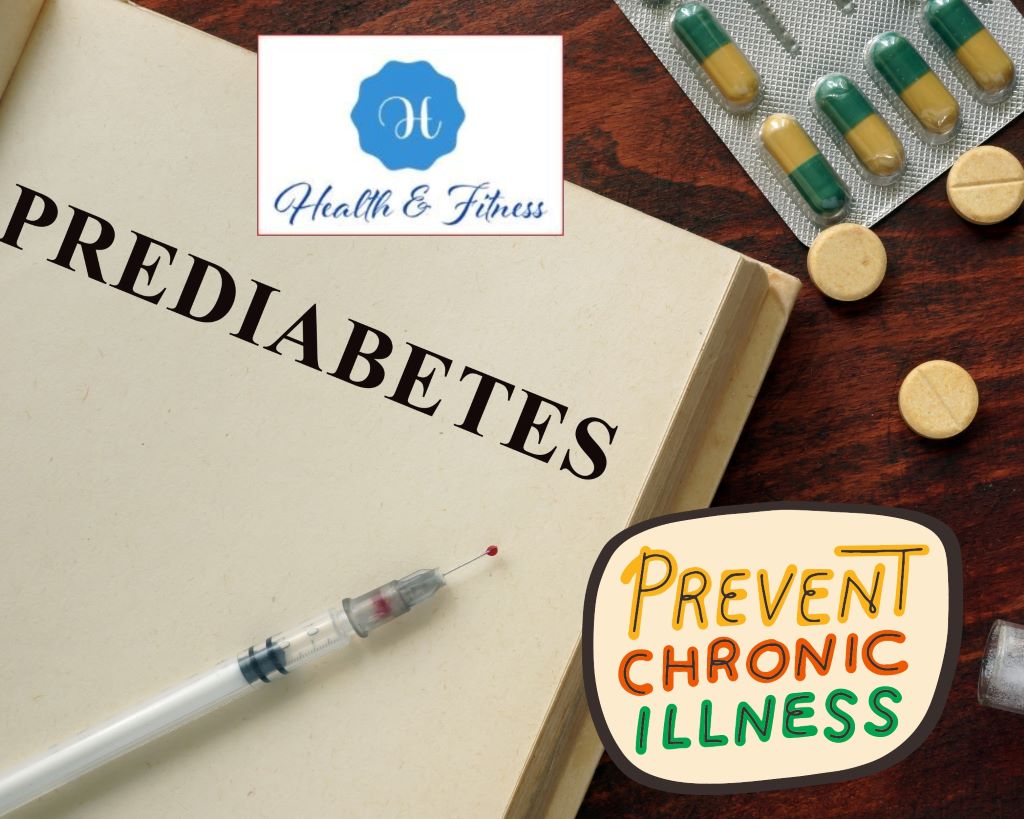Prediabetes and borderline diabetes refer to a condition where blood sugar levels are higher than normal but not yet high enough to be diagnosed as type 2 diabetes. An estimated 88 million American adults have prediabetes, making it important to understand this condition and how to prevent it from progressing to full-blown diabetes. This guide provides expert information on prediabetes borderline diabetes, including risk factors, symptoms, treatment, and prevention strategies.
What is Prediabetes/Borderline Diabetes?
It occurs when blood sugar levels are elevated beyond the normal range but not high enough for a diagnosis of diabetes. Doctors may refer to this state as borderline diabetes or impaired glucose regulation.
With prediabetes, the body has trouble regulating blood sugar properly. Your body doesn’t make or use insulin well, causing glucose to build up in your bloodstream rather than being absorbed by cells for energy.
While not yet classified as diabetes, prediabetes significantly raises your risk of developing type 2 diabetes within 5 years if left untreated. Taking early action to reverse It can help prevent the onset of diabetes and its complications.
Key Prediabetes Statistics
Here are some key statistics:
- 88 million adults in the US have prediabetes – that’s 1 in 3!
- Of those with prediabetes, 80% are unaware they have it.
- Within a span of five years, approximately 15-30% of individuals diagnosed with prediabetes are likely to progress to type 2 diabetes.
- It also increases the risk of heart attack, stroke, and other cardiovascular issues.
- After age 50, the risk of It and diabetes rises steeply.
- Making lifestyle changes can cut diabetes risk by over 50% for those with prediabetes.
Being aware of these facts underscores the importance of getting screened if you are at risk and making diet and exercise modifications if needed.
Risk Factors
Certain risk factors increase your likelihood of developing prediabetes and type 2 diabetes:
- Being overweight significantly increases the risk of developing type 2 diabetes by putting strain on the body’s insulin regulation mechanisms.
- A family history of the condition, particularly in close relatives like parents or siblings, can elevate an individual’s susceptibility.
- As people age, especially beyond 45-50 years, their likelihood of developing type 2 diabetes rises sharply.
- Regular physical activity plays a crucial role in maintaining healthy blood sugar levels, while a sedentary lifestyle can increase risk.
- Certain racial and ethnic groups, including African Americans, Hispanics, Native Americans, and Asian Americans, face a higher predisposition to type 2 diabetes.
- The presence of high blood pressure or elevated cholesterol levels may indicate underlying insulin resistance issues, further increasing diabetes risk.
- Women who experienced gestational diabetes during pregnancy are at an increased risk of developing prediabetes or type 2 diabetes later in life
Knowing these risk factors can help you and your doctor assess if you should get screened.
Common Symptoms of Prediabetes
It doesn’t always cause obvious symptoms, which is why screening is so important. But some signs include:
- Increased thirst and frequent urination – Caused by excess sugar spilling into urine.
- Fatigue – cells aren’t accessing glucose properly for energy.
- Blurred vision – Fluctuating blood sugar can cause temporary swelling in the eyes.
- Slow healing wounds/infections – High blood sugar impairs immune function and ability to heal.
- Darkening skin patches – Acanthosis nigricans around the neck and under arms caused by insulin resistance.
Let your doctor know if you experience any of these common prediabetes symptoms. Testing your blood sugar is the only way to know whether you have it.
Diagnosing
It is diagnosed through blood tests that measure your average blood sugar levels over the past 2-3 months:
- A1C test – This test measures your estimated average blood sugar.A1C levels ranging from 5.7 to 6.4% are indicative of prediabetes.
- Fasting blood sugar – After fasting overnight, a 100-125 mg/dL level signals prediabetes.
- Oral glucose tolerance test – After fasting, drink a sugary solution and get your blood tested. Levels between 140-199 mg/dl at 2 hours confirm prediabetes.
Ensure to get screened if you have any prediabetes risk factors. Diagnosing it early gives you a critical window to take action to protect your health.
Prediabetes Treatment Approaches
If diagnosed with it, the primary treatments are lifestyle changes to lose weight, improve diet, exercise more, reduce stress and get better sleep. Making these changes can reverse prediabetes and prevent type 2 diabetes.
Your doctor may also recommend:
- Metformin – The oral medication metformin may be prescribed to help regulate blood sugar in some prediabetic patients.
- Supplements – Vitamin D, magnesium, omega-3 fish oil, chromium, ALA, and cinnamon may aid blood sugar control.
- Weight loss surgery – Bariatric surgery may help very obese prediabetic patients normalize blood sugar levels.
Treatment focuses on restoring normal blood sugar regulation to avoid developing diabetes down the road.
5 Lifestyle Tips to Reverse Prediabetes
Here are 5 crucial lifestyle changes to reverse it:
- Lose excess body weight- Carrying extra pounds makes insulin resistance worse. Losing 5-7% of your body weight can lower blood sugar significantly.
- Exercise regularly– Aim for 150 minutes per week of brisk walking, cycling, swimming, etc. Exercise makes cells more sensitive to insulin.
- Eat a nutrient-rich, low-carb diet– Focus on high fiber vegetables, fruits, lean protein, and healthy fats. Avoid processed carbs and sugar.
- De-stress- Find healthy ways to manage stress like meditation, yoga, and deep breathing. High cortisol worsens insulin issues.
- Improve sleep habits- Get 7-9 hours nightly. Poor sleep increases insulin resistance.
Making these lifestyle modifications can restore normal blood sugar regulation and slash your risk of developing type 2 diabetes.
Meal Plan for Reversing Prediabetes
Following a healthy meal plan designed to maintain steady blood sugar levels is key for reversing it. Here is a sample plan:
Breakfast: Veggie omelet with spinach, mushrooms, peppers, onions. Side of berries.
Snack: Hummus with celery and carrot sticks. Handful of nuts.
Lunch: Grilled chicken salad with kale, tomatoes, avocado, olive oil vinaigrette.
Snack: Plain Greek yogurt with cinnamon and chopped walnuts.
For dinner, enjoy baked salmon served with roasted Brussels sprouts and sweet potato.
Dessert: Dark chocolate square (70% cacao).
Focus on getting fiber from fruits, vegetables, nuts, seeds, and whole grains. Choose lean proteins and healthy fats, and limit sweets. Portion control is also important for weight loss.
Supplements That May Help Reverse Prediabetes
Certain supplements may also aid treatment when combined with lifestyle changes:
- Cinnamon – This can help stabilize blood sugar and lower insulin resistance. Take 1-2 grams daily.
- Berberine – This plant compound mimics insulin and may help lower glucose. Take 500 mg 2-3 times daily.
- Curcumin – Found in turmeric, curcumin is a strong anti-inflammatory which may improve insulin sensitivity. Take a 400-600 mg supplement daily.
- Alpha lipoid acid (ALA) – An antioxidant that has been shown to lower blood sugar levels. Take 300-600 mg daily.
- Chromium picolinate – This trace mineral helps improve the body’s use of insulin. Take 200-500 mcg per day.
Talk to your doctor before taking supplements to ensure safety and proper dosing.
Work with Your Doctor for Ongoing Care
If you are diagnosed with prediabetes, it’s essential to partner with your healthcare team for ongoing monitoring and support. Follow up every 3-6 months to recheck your blood sugar levels and track progression.
Your doctor can also help adjust medications and treatment plans as needed. They may refer you to a dietitian, diabetes educator, or fitness trainer for extra help in implementing lifestyle changes. Ongoing medical care is key for preventing it from developing into type 2 diabetes.
What is the difference between Prediabetes and Diabetes?
Prediabetes and diabetes are both conditions involving higher-than-normal blood sugar levels. However, there are some important differences:
- Blood Sugar Levels- With prediabetes, blood sugar levels are elevated but not high enough yet for a diagnosis of type 2 diabetes. In diabetes, blood sugar is high enough to meet the criteria for a diagnosis.
- Diagnostic Thresholds– For prediabetes, hemoglobin A1C is between 5.7-6.4%, and fasting blood sugar is 100-125 mg/dl. For diabetes, A1C is 6.5% or above, and fasting blood sugar is 126 mg/dl or higher.
- Severity– Prediabetes indicates some impairment in how the body handles blood sugar. But diabetes is more severe – the body can’t properly regulate blood sugar on its own.
- Symptoms– Prediabetes symptoms like increased thirst and frequent urination are mild. Diabetes symptoms are more pronounced and can include extreme thirst, unexplained weight loss, infections, and fatigue.
- Risk of Complications– While prediabetes raises the risk of type 2 diabetes and heart disease, the risks are lower than with a diabetes diagnosis. Diabetes brings a much higher risk of eye, nerve, kidney, and cardiovascular damage.
- Reversibility– Making lifestyle changes can often reverse prediabetes. Once diabetes develops, it is a chronic progressive condition that can be managed but not cured.
- Treatment- Prediabetes treatment emphasizes lifestyle changes – lose weight, improve diet, exercise more. Diabetes treatment also uses medications, insulin therapy, and closer medical monitoring.
The key difference is that with it, there is still a window of opportunity to prevent progression to diabetes. Knowing these differences underscores why early detection and proactive lifestyle changes for prediabetes are so important.
Take Control of Your Health
While being diagnosed with prediabetes can be concerning, it also gives you a valuable opportunity to take action to prevent type 2 diabetes. Focus on losing excess weight, exercising regularly, eating a clean, balanced diet, managing stress and getting quality sleep.
Making positive lifestyle changes along with working closely with your doctor can reverse and restore normal blood sugar regulation. Take control of your health starting today!
Key Takeaways
- Prediabetes is higher than normal blood sugar levels but not high enough for a diabetes diagnosis.
- 88 million Americans have prediabetes – 90% are unaware they have it.
- The major risk factors are obesity, family history, older age, and physical inactivity.
- Symptoms may include increased thirst, fatigue, blurred vision, and slow wound healing.
- Diagnosis is made through A1C, fasting glucose or oral glucose tolerance tests.
- Treatment focuses on weight loss, diet, exercise, stress reduction, and sleep.
- Work closely with your doctor for ongoing monitoring and support.
- Take action early to reverse prediabetes and avoid developing type 2 diabetes.



